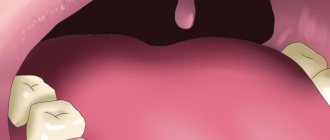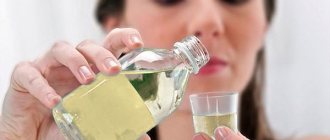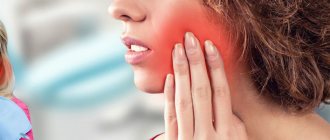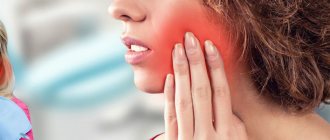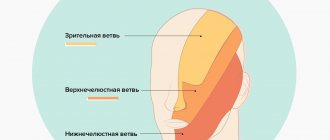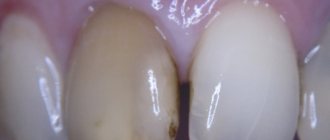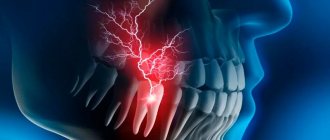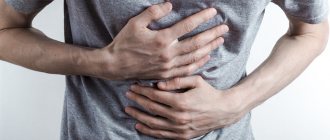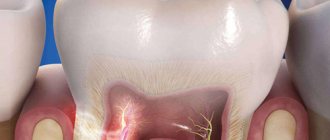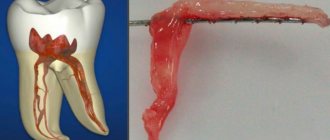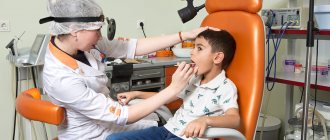There are many different ways to reduce pain associated with musculoskeletal problems. For example, back pain is often treated through massage, stretching, a variety of exercises, etc. What methods are worth trying?
Of course, you should seek advice from a specialist, but chances are they will prescribe one treatment option without telling you about other options that may also be well supported by research.
Some people will find that deadlifting reduces their back pain, while others will have the complete opposite experience. The same will be true for running or doing yoga. Unfortunately, you can't say for sure which option will be effective in your case, so you may have to go through trial and error. However, you cannot try everything, as some options are pure quackery.
Friends, on December 19-20, a seminar “Explaining Pain” will take place in Moscow. Find out more...
In this post, we will discuss several ways to reduce pain. These include:
- Rest.
- Power training.
- Improving mobility (stretching, exercises to improve joint mobility).
- Coordination/motor control exercises (corrective exercises, Pilates).
- Mindfulness exercises (meditation, yoga, Feldenkrais method).
- Improving general health (nutrition, adherence to work and rest, healthy sleep).
- Manual therapy (massage, mobilization, manipulation).
Each of the above methods can be effective even in the absence of a specific diagnosis. In this sense, they can be compared to broad-spectrum drugs. In some cases, you don't even need a specialist, especially if you know the basic principles. Below is a brief description of each approach, with its advantages and features.
Rest
If your Achilles tendon begins to hurt after a few weeks of intense running, you can assume that the underlying cause of the pain is excess mechanical stress. Therefore, rest is a logical option to solve the problem (especially in the first stages). Most people understand this well, but some neglect this simple rule.
And that's why:
- This may be due to the fact that some people simply do not like to rest. Of course, by pushing themselves regardless of their condition, they can harm themselves.
- Another reason is the inability to notice that the load has become excessive. Obviously, 5km a week is more than nothing, but the transition from 10km to 15km may be less noticeable. Increased physical stress is even more difficult to notice when it is associated with other activities. For example, adding two low-intensity workouts to your weekly running program may require reducing your overall running volume.
- The most difficult thing to notice is the additional “load” in the form of emotional stress, which has a real physical effect on the body, an example of which may be an increase in pain sensitivity. So your back can easily handle 20km of running a week when you're not under any emotional stress, but it starts to hurt when you're stuck at work or don't get enough sleep.
To make sure you're giving your body enough opportunity to recover, pay attention to the following things.
- If an activity causes pain, don't do it (at least for a while) or do it to a lesser extent.
- Avoid overtraining and manage your training load. This may require some expert level knowledge, for example if you are an athlete.
- Try to reduce emotional stress.
- Optimize your sleep and recovery.
Note
- Taking a lot of rest is not always a good thing.
- If you've rested long enough to recover, then it's probably time to move on to a more active phase of treatment.
RECOMMENDATIONS FOR BACK PAIN (SPINE PAIN)
At home, to alleviate back pain (pain in the spine), we can advise you on a number of simple recommendations:
- Taking into account contraindications, take a non-narcotic analgesic, for example, Ketanov or Movalis.
- Taking into account contraindications, take a non-steroidal anti-inflammatory drug, for example Arcoxia or Airtal.
- Taking into account contraindications, take a diuretic drug, for example, Furasemide.
- Anoint the sore spot with an anesthetic gel, for example, Fanigan-fast-gel, Diklak-gel, Fastum-gel, or stick an Olfen patch on the sore spot.
- It is extremely important to be at rest in a comfortable and least painful position before visiting the doctor.
- Completely eliminate (or at least minimize) physical activity.
- Immobilize (immobilize) the affected part of the spine as much as possible:
- for pain in the cervical spine, it is advisable to wear a neck corset (bandage) or apply a cotton-cardboard splint to the neck, as in case of injury;
- if there is pain in the thoracic spine, bandage the chest tightly, as if you had broken ribs;
- for pain in the lumbar spine: it is advisable to wear a special medical fixing belt (corset) for the lumbar spine with fixing plates; spread a blanket on the floor and lie down on the floor.
If the above-mentioned belt (corset) is not available, you can put a small cushion under the lower back. Take the least painful position. Basic comfortable poses (see pictures): (1) lying on your back with a bolster under your knees from 1 - 2 folded blankets;
(2) lying on the affected side with the leg bent;
The measures described above do not eliminate the cause of back pain, but only alleviate the patient’s condition. The main cause of back pain is the presence of spinal disease in acute or subacute form (stage).
PREVENTION OF BACK PAIN (SPINE PAIN)
To prevent back pain (pain in the spine), we recommend that you read the articles How to sit correctly, How to stand correctly, How to lift and move weights correctly, and How to lie and sleep correctly. Also, it is equally important to know how the spine functions (see the article The structure of the human spine).
TREATMENT OF BACK PAIN (SPINE PAIN)
To quickly eliminate back pain (pain in the spine) and treat the disease that caused back pain, you can contact our medical center.
Since 2003, our medical center has been treating spinal diseases and back (spine) pain, which are the main manifestations of spinal diseases. To eliminate back (spine) pain and treat spinal diseases, chiropractors (manual therapy doctors) at our center use a non-traumatic method of non-surgical treatment.
A course of non-surgical treatment of back pain (pain in the spine)
in our center is 3 - 15 complex treatment sessions (depending on the cause of pain and the stage of the pathological process). The frequency of visits to our center during course treatment is daily or every other day. You can relieve acute pain and significantly improve your condition in 1 to 3 treatment sessions.
During treatment sessions, the following are used in a comprehensive manner: manual therapy, therapeutic massage, physiotherapy, drug therapy and other methods of non-surgical treatment.
During the treatment process, it is necessary to observe the most gentle regime for the spine, and to exclude as much physical activity as possible during the course of treatment and at least several days after the end of the course of treatment!
You need to pay very close attention to the recommendations of your chiropractor (manual therapy doctor). Sometimes the patient requires additional external fixation of the spine
. In this case, after a complex treatment session and manual therapy procedure (correction of the spine, realignment of the vertebrae), the patient is recommended to wear a special medical fixation belt (corset).
As you feel better, you should carefully follow the recommendations of your chiropractor (chiropractor). Do not think that after a session of manual therapy and relief of acute pain, you are immediately cured! This is just the beginning: the pain has gone, but impaired muscle tone and spinal instability remain. If you are treated according to the principle “once and done!” - this is the technique of charlatans. A serious doctor, after relieving the pain of the acute period, will definitely recommend further treatment.
Power training
Of the various strategies listed here, strength training is by far the one that most patients are least inclined to try. However, this method is effective for a wide range of diseases of the musculoskeletal system.
For example, the best treatment for Achilles tendinopathy is relatively simple—gradually increasing the load on the calf muscles through resistance exercises. For several types of knee pain, quadriceps strengthening is the most evidence-based treatment. Adding strength training to other lower extremity muscles can help even more. The same is true for the lower back, cervical and shoulder joints.
You can read about what pain is here.
The bottom line is that for many types of musculoskeletal pain, you won't find a treatment that works better, on average, than simply strengthening the muscles around the painful area to avoid worsening symptoms. This simple approach is sometimes called “just load it” and is advocated by many respected physical therapists.
Why does this work? We can't be sure, but it may involve one or more mechanisms:
- Exercise-induced analgesia through activation of endogenous endocannabinoid and/or opioid systems.
- Physiological changes such as reactivation of tissue healing, improvement of metabolic or vascular support of tissues, or reduction of inflammation.
- Mechanical changes, such as increased ability to use good technique, absorb force, and/or stabilize joints.
- Psychological changes such as the placebo effect, increased optimism and a sense of self-efficacy.
For best results, you should consult with a professional, especially a physical therapist who knows how to exercise with pain. The process doesn't have to be extremely complicated, and you can figure it out on your own if you understand the basic principles of resistance training. The goal is to increase strength without increasing pain. One tool is isometric exercises, which involve tensing your muscles without shortening them, much like pushing against a wall as hard as you can. Simply find the joint angle that gives you the greatest muscle tension to discomfort ratio and work until you get tired.
To ensure that the exercise does not aggravate your pain, it is recommended to avoid pain levels above moderate discomfort (up to 4 on a scale of one to ten). Also, make sure your pain doesn't get worse immediately after doing the exercise or the next day. There's a good chance you'll feel better almost immediately because... intense muscle tension is a good way to induce exercise-related analgesia.
Even if you manage to strengthen your muscles, but the pain does not decrease, then look at it positively, because you will still function better.
Note
- There are no magic muscles (like the glutes or transverse abdominis) that need special attention, and there are no “bad” muscles (like the quads or pecs) that shouldn't be strengthened.
- There is no one training method (e.g., kettlebells, barbells, machines) that is significantly superior to others. Focus on the basic principles, such as progressive overload, and use whatever method makes the most sense for your situation.
- A common mistake is simply not working hard enough. Make sure you really challenge your ability to generate force - work hard to get close to your safe limit or get well tired.
What causes aching pain in a tooth?
The main causes of pain are:
- Infectious lesions of dental units: caries, pulpitis, periodontitis. Even in the later stages, these diseases may not give a clearly defined clinical picture and may only manifest as persistent aching pain inside the tooth when exposed to any irritant.
- Too thin enamel layer, cracks and chips in the enamel.
- Periodontitis. In some cases, gum inflammation is accompanied by throbbing toothache.
- Treatment or tooth extraction. Aching pain often appears after the removal of a wisdom tooth or any other tooth - this is a normal reaction to the operation, and usually the painful sensations gradually go away on their own after a few days. Also, aching pain in the tooth often occurs after removal of the nerve - this is a common reaction of the body to treatment and does not require special therapy.
Improved motor control
Physical therapists often seek to correct "dysfunctional" movement patterns. However, this is not entirely clear, for example, some studies show that exercises to improve motor control do reduce pain, but the interesting thing is that this can happen even in the absence of improvement in motor control. Additionally, most of our ideas about what movements are dysfunctional are guesswork and do not fully reflect the complexity and variability of human movement.
Mind and body
Pain is more than just tissue damage. This is a reflection of how the nervous system and unconscious parts of the brain perceive processes occurring in the body (and beyond). This is especially true when the pain is chronic, correlated with other perceptual disturbances, and appears to be due to psychosocial rather than structural problems. There are many different mind/body practices that focus on improving body awareness through increased awareness and focused attention. Some of them, studies show, actually reduce pain.
If you are interested in this area, consider one of the following treatments for chronic pain:
- Meditation.
- Mindfulness-based stress reduction.
- Yoga.
- Dancing.
- Feldenkrais method.
- Martial arts (especially tai chi or qigong).
Note
- Don’t think that the pain is “in your head” and that the body doesn’t really matter, etc.
- The mind/body method is not a cure for pain, but rather it can be seen as a valuable tool for reducing it.
Types of painkillers
Remedies for pain are divided into several types:
- Narcotic drugs. They depress the nerve centers that respond to pain. As a rule, such drugs cause relaxation, euphoria, and drowsiness. Such products are issued only with a medical prescription.
- Non-narcotic drugs. They do not affect the nervous system, do not cause drowsiness or euphoria. Therefore, such drugs are sold without a prescription. They usually also have anti-inflammatory and antipyretic properties.
Non-narcotic painkillers are divided into groups:
- NSAIDs (non-steroidal drugs) have an anti-inflammatory effect, lower temperature, relieve pain;
- Antispasmodics for spasms;
- mixed preparations eliminate spasms and pain.
Narcotic drugs are not commercially available and therefore are not used for self-medication. The most common drugs are NSAIDs. They quickly relieve pain and inflammation, but have many contraindications and side effects. They are especially dangerous in case of ulcerative lesions of the gastrointestinal tract or if they are suspected. Because they can cause gastric bleeding and aggravate ulcers of the stomach and intestinal mucosa. This can sometimes be fatal.
Improved overall health
Anything you can do to improve your overall health can help with musculoskeletal pain, especially when the pain is chronic and comorbid with other chronic diseases such as obesity or autoimmune diseases.
In this case, working to improve your overall health may be the best way to manage your pain. This means eating a balanced diet, maintaining a work-rest schedule, walking outdoors, aerobic exercise, minimizing emotional stress, and getting good sleep.
Note
Make sure your interest in healthy living doesn't turn into unhealthy behavior.
Manual therapy
There is evidence that manual therapy helps with musculoskeletal pain in the short term. Yes, this is true, but there are some nuances.
First, recognize that manual therapy works by modulating the nervous system's sensitivity to pain, not by "fixing" tissue problems such as malaligned vertebrae, fascial adhesions, etc. If you feel better after chiropractic therapy, know that the neurophysiological mechanisms that explain its effectiveness are not much different from what makes most people feel good after strength training or aerobic exercise, which shows good results in the long term.
On the other hand, there is no doubt that for some people, skillful and sensitive human touch represents something unique. If you respond well to what Diane Jacobs calls “human primate social grooming,” then of course you will prefer manual therapy. But don't think that this is necessary to "fix" some problem in your body, like a mechanic fixing a car.
Do not neglect medications!
I have arthrosis of the knee joints and fingers. Is it advisable to take courses of chondroprotectors?
O.A. Kholodova, 49 years old, Krasnogorsk
– Taking chondroprotectors is very important in order to restrain the development of degenerative-destructive processes in diseased joints, improve their mobility and prevent the process from spreading to other joints. In many patients who take courses of these drugs, the need to take NSAIDs is reduced due to decreased pain.
And physical therapy is required. According to the UK's National Institute of Health, it is even more effective than laser therapy, phonophoresis and other similar therapies.
